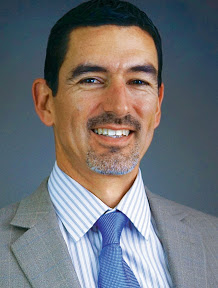Using big data can mean big gains for business — if it’s done right. Analyzing the vast digital sea of available information correctly gives organizations the chance to develop robust internal talent pipelines, make well-informed external hires, or, like at The Walt Disney Co., align traditionally disparate groups to improve organizational efficiency.
On the other hand, if an organization tries to bite off too much with big data, it runs the risk of becoming distracted from priorities that matter most, according to Al Adamsen, a thought leader on workforce analytics and executive director at consultancy the Talent Strategy Institute.
Adamsen spoke with Talent Management about the state of big data, its benefits, challenges and why some organizations should approach it with caution. Edited excerpts follow.
What is the state of big data? What are the possible benefits and challenges?
Big data in HR has been talked about a lot lately, and it will continue to be talked about a lot. Big data has big potential. My initial question for leaders is, “Where should we be spending time and resources, particularly when there are other priorities that can better serve your organization?”
Fast forwarding two years down the road, the organizations that are able to handle big data in HR and talent management are going to have a distinct competitive advantage in recruitment and development. However, big data is like teenage sex: Everyone’s talking about it, but no one’s really doing it. That’s essentially the reality that exists in most organizations. It’s nice to talk about, but it’s not where the attention can and should be placed.
What can be improved in the big data arena?
Understanding where talent is in the open market, as well as within your organization. The ideal scenario is that organizations look internally to fill a particular role, especially if it’s an elevated position. However, the data within an organization to actually do that search is limited.
Historically, we’ve tried to embed skills databases, experience and so forth within employee profiles on a human resources management system. LinkedIn has really turned the world on its head. And people are putting value in it. Organizations that are able to mine that and truly build mindshare will be at an advantage.
Could one of the challenges of big data be the large amount of information available and not having the ability to sift through it to make it useful?
Absolutely. There’s so much data out there, there’s so much distraction, so much noise, how do I, as an analyst, find the meaningful signals? Those signals, in some cases, are hard to come by, particularly if HR analytics and workforce planning is not approached in a systematic, disciplined way. Sometimes organizations get distracted instead of focused. If you’re doing planning and analytics well, it heightens focus and reduces risk.
Do organizations risk damaging their employees’ trust while ramping up their data gathering efforts? How can they avoid feelings of invaded privacy?
Yes and no. It actually can be a place where leaders develop and reinforce trust. There’s certain information that should be private for legal and ethical reasons. There’s also other information that is just going to be in the public domain, and leaders and employees are going to have to accept that. Then the ethical quandary arises: What is appropriate to do with that data? That’s still being sorted out. I think the real danger is when leaders and organizations go snooping and they don’t inform the employee base that they’re doing some of this work or sharing the outcomes of the work.
What did you help accomplish at Disney with respect to analytics? What was the highlight for you?
The big highlight was getting formerly disparate groups and individuals on the same page in terms of setting priorities, and understanding the opportunities and limitations within the data and processes the organization had. There is a talent strategy team at Disney that’s composed of production, HR, IT and finance. It’s a group that talks about talent strategy. They identify a set of priorities and ensure they are researched properly. They manage projects with a certain level of discipline that previously didn’t exist.
Are there certain industries that have a greater need for big data?
I would say that the knowledge economy in general needs to understand the benefits and risks inherent in big data analytics. Those industries that have a scarcity of talent in key roles are of particular risk, and conversely they have great opportunities to leverage talent analytics. Those industries include the energy, technology and health care industries, which have an undersupply of talent. Understanding how to build a pipeline, understanding where those individuals are, who’s suited with a core set of skills and behaviors and experiences is going to be important.
Where is big data headed?
I’m going to put big data under talent analytics and workforce planning. The reason being big data can be and often is a distraction. There are some basics that can and should be done in analytics, which will highlight what data to go after. In the absence of that, it’s kind of like going into the muck and hoping you find a nugget of gold. That’s not an effective approach.
An effective approach includes great planning and really understanding the business strategy and future talent needs, understanding the capability embedded in the organization — which is where many fall short. They also don’t have good visibility of what’s available in the marketplace. They lack a mindshare of prospective employees. This is the essence of workforce planning and analytics. If those basics are done, then an organization can look to see what else is out there on LinkedIn, Facebook and Twitter.
Who is Al Adamsen?
Career Highlights
2008–present
Founder and executive director
Talent Strategy Institute
2008–2009
HR analytics practice leader
Kenexa
2004–2006
Director of employee insights
Gap Inc.
1997–2000
Managing director and partner
ClearWater
1994–1997
Senior consultant
Ernst & Young
1989
Graduate, economics
University of California at Davis















